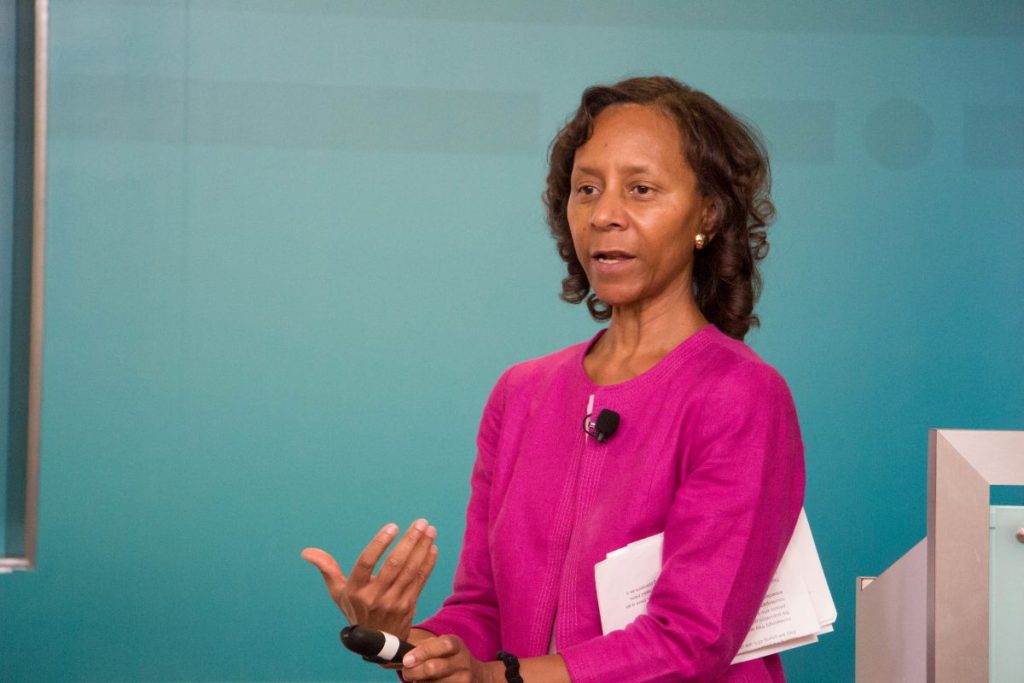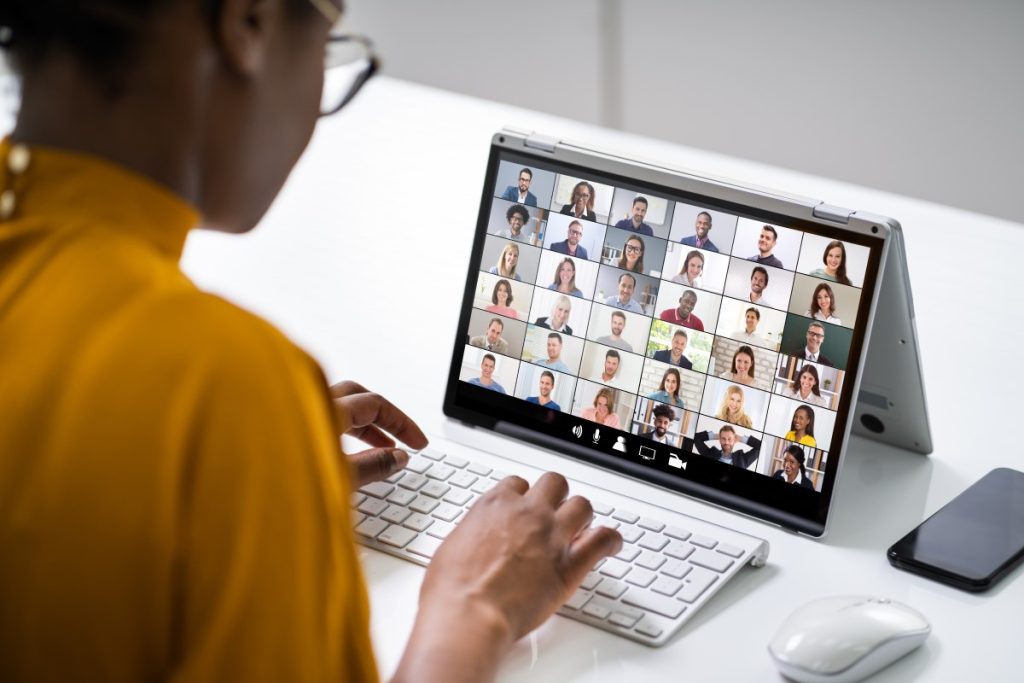
Image courtesy of New America and used under Creative Commons licensing.
We’d like to recognise Marian Croak for her services to telecommunications. Without her work at AT&T in the 1980s and 1990s to advocate for what later became Voice over Internet Protocol (VoIP), we wouldn’t have it as the current standard for business telephone systems. We also wouldn’t have video conferencing technology as we know it today.
I have always been motivated by the desire to change the world, and to do that I try to change the world that I’m currently in.
– Marian Croak
Notable achievements in VoIP and beyond
Currently Vice President of Engineering at Google and lead of Google’s Research Centre for Responsible AI and Human Centred Technology, Marian has an impressive CV. To give you an idea just how talented she is, here’s a few of her career highlights.
- 1982: Marian joins Bell Labs (and stayed there for over 30 years)
- 1980s & 90s: Marian persuades AT&T to adopt TCP/IP*, a standardised way of packaging and communicating digital information.
- 2005: Develops the first platform for donations via text message, which raised $130,000 to support the Hurricane Katrina relief appeal
- 2013: Inducted into the Women in Technology International Hall of Fame
- 2014: Marian already has over 200 U.S. patents relating to her work, over 50% of them for VoIP products
- 2014: Marian leaves AT&T (the parent company of Bell Labs) and joins Google
- 2016: Marian leads a team bringing public wi-fi to rail stations in India and fibre broadband in Africa
- 2022: Inducted into National Inventors Hall of Fame, Marian was one of the first two Black women to receive this honour.
*TCP/IP stands for Transmission Control Protocol/Internet Protocol.
Marian’s role in championing TCP/IP
In the 1980s, there wasn’t yet a commercially viable way to send voice data over a digital network and the world needed a standardised and more efficient system for it. There were two competing protocols for data transfer between computers: TCP (Transmission Control Protocol) and ATM (Asynchronous Transfer Mode).
In the early 1990s, US telecommunications company AT&T was planning a multibillion-dollar switch to ATM (or Asynchronous Transfer Mode) protocol for sending voice, text and other communications data. Backing ATM made sense for the telecoms company, as both ATM connections and the public telephone network are circuit-switching networks. With a circuit, information is always sent sequentially and, with its history in telephony, it was a type of technology the company already understood well.
Don’t go for perfection. Go for significance. Try to do something that has an impact. You can be perfect, you can fit in totally and accomplish very little. So … dare to be different. Dare to fail Just keep going. Don’t quit.
– Marian Croak
As we now know TCP/IP (Transmission Control Protocol/Internet Protocol) became the standard for the internet, but at this point its fate was in no way certain. Rather than being a circuit-switching network, TCP is a packet-switching network. The data packets are treated independently (or non-sequentially): each is sent by the fastest route and reassembled in the correct order at their destination.
Marian saw much greater potential for TCP and she and her team persuaded the AT&T executives to switch to it, even though the technology needed more development. She faced criticism from others who argued that the technology she was working on was “toy like”, but she persevered. AT&T decided to trust Marian’s expertise and merged its IP team and voice networking engineering team, assigning Marian to oversee the 2000 or so engineers.
Where would we be without VoIP?
Marian and her engineering team developed the basis for VoIP that we now use daily. While the technology has continued to develop since the 1990s, the internet still operates as a packet-switched network. This was a radical break from traditional telephony systems and, ultimately, reduced the costs of making voice calls and opened the way for video conferencing tools like Zoom.

Our services to our customers make use of VoIP in many ways:
- Modern hosted or on-premises VoIP telephone systems.
- Unified communications systems (like MS365) that combine video, voice, email and text messaging so employees can connect across the world easily and cheaply.
- Disaster planning and disaster recovery, building in redundancy with cloud and local backup, to get your business back on track in hours rather than days.
In short, we wouldn’t have VoIP in the form we know it today without Marian Croak and her work. It only seems right to make sure more people know about her contribution to the technology that is used across the world, in almost every home and business.
Contact Heliocentrix to find out more about our VoIP services for your business.
